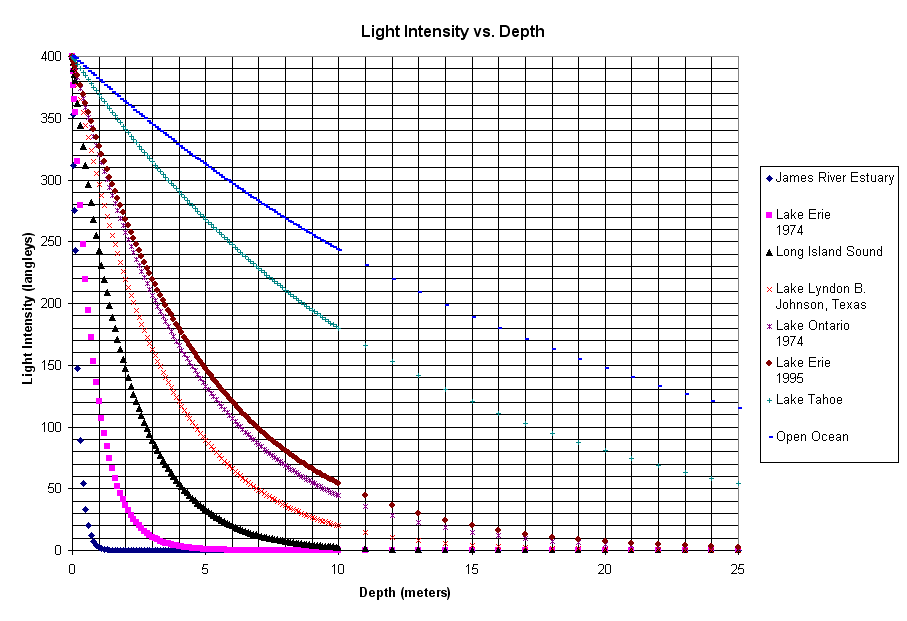| Water and
Light
Light that goes into water at first seems very bright. But as the depth increases the light that is able to pass through becomes less and less. The light that goes through an ocean is complex. "Water interacts with the light that strikes it [...] Pure water tents to absorb long wavelength light (red, infrared) strongly, and allows short wavelength light to pass (blues, ultraviolet)"(). The light that is able to pass through will bounce around on all the water molecules and that will take energy from the light and cause it to fade away. The clearer the water is the more light that is able to pass through. On the graph below the more sediment that is in the water causes the light to be less intense at a quicker rate. Water tends to have a blueish hue in large oceans because of the reflection and refraction of the sky above it. It may also take on a greenish color based on how much plankton and algae is suspended in the water. Water vapor in the air will do similarly what it will do in a body of water. It will block harmful Infrared rays while allowing UV rays to pass through. Water vapor will collect in the air and form clouds, the cloud block the IR rays which is why the shade created by the clouds feels cooler than if you were in direct sunlight. The water vapor also helps to trap heat in the Earth's atmosphere. In the desert, there is little to no water vapor in the atmosphere which is why in the desert it can get to below freezing temperatures. In colder climates, ice and snow can reflect heat and energy from the sun back into space and keep the Earth from warming up in those areas. Since there is less warm air in that part of the world, more ice and snow will continue to gather and form until the earth can tilt that part of itself back around to face the sun more often and warm up the atmosphere.  http://w3.marietta.edu/~biol/biomes/water_physics.htm |
|
Polarity Phase Changes Cohesion & Adhesion Bibliography |